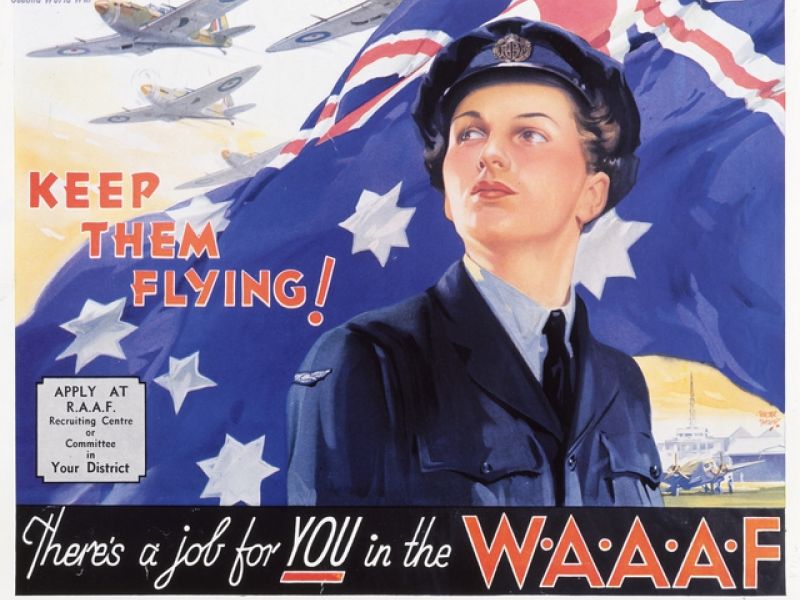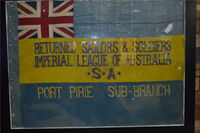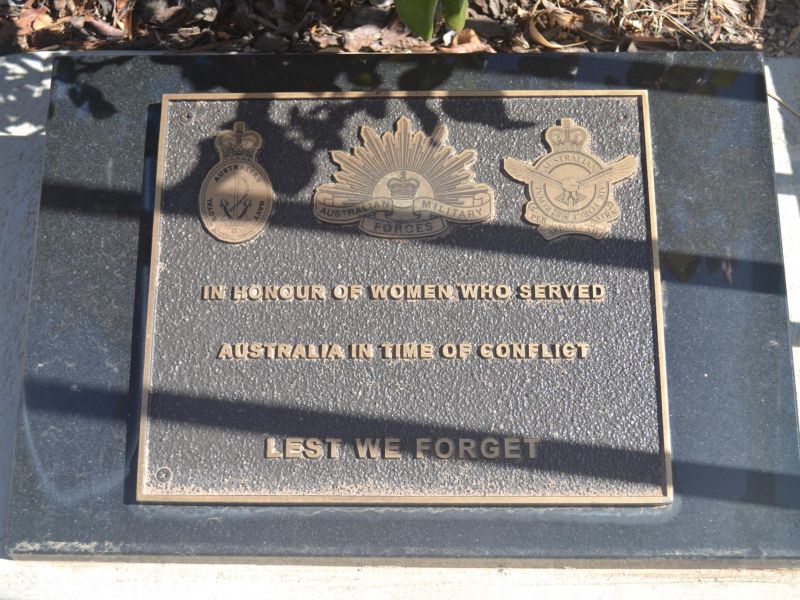Women’s Auxiliary Australian Air Force
The Women’s Auxiliary Australian Air Force (WAAAF) was formed in March 1941. It was instrumental in changing the role of Australian women in war. With the creation of the WAAAF, women were no longer restricted to voluntary support activities and nursing. The WAAAF opened the door for women to participate directly in military tasks, albeit in a supporting capacity.
Initially the main employment for women was in the area of wireless telegraphy. However, when Japan entered the war in December 1941, there was an increased demand for men to take on operational tasks. This forced the recruitment and re-muster of WAAAFs into a large range of categories.
Of 120 Royal Australian Air Force (RAAF) trades existing during World War 2, women were employed in 72.
WAAAF officers and airwomen performed diverse functions including: flight mechanics, armament fitters, aerial cinematography, chemical warfare research as well as the more conventional roles of mess steward, cook, administrative officer and clerk. They performed aerodrome soil testing, carried out mustard gas decontamination trials and acted as landing control officers for parachute training. WAAAFs were aircraft fabric workers, flight riggers, stores hands and aircraft plotters, and they taught aircraft recognition to aircrew trainees.
WAAAFs served in 273 RAAF units in all parts of Australia including Port Pirie. In June 1943, there were just over 100 WAAAF attached to No 2 Bombing and Gunnery School; by January 1945, there were 148 WAAAF as part of No. 3 Aerial Observer School personnel strength.
Over two thirds of the WAAAF were below the age of 21 when they joined. They came from all walks of life, city and country. Although the majority came from the more populous states, Victoria, New South Wales and Queensland, 2,651 came from South Australia, 3,345 from Western Australia and 836 from Tasmania.
They served almost exclusively in Australia, although a very small number transited through New Guinea and the Solomon Islands for a limited period of time carrying out their duties.
Numbers increased from 1500 women at the end of 1941 to over 18,000 in late 1944. With the end of the war, the WAAAF was demobilised.
Sources:
The Age, Melbourne, Vic, Wednesday 26 February 1941
RAAF Air Power Studies Centre, The Home Front. Mainland Australia and the Southwest Pacific Area 1939-1945
- Trove Australia http://nla.gov.au/nla.news-article205294399

 RSL (Port Pirie Sub Branch) Inc.
RSL (Port Pirie Sub Branch) Inc.